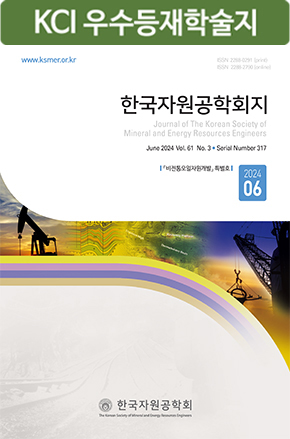Research Paper
- Artvinii, M. and Bais, YI., 1979, “Malignant mesotheliomas in a small village in the Antaolian region of Turkey: An epidemiologic study,” JNCI, 63, pp. 17-22.
- Becklake, M.R., 1976, “Asbestos-related diseases of the lung and other organs, Their epidemiology and implications for clinical practice,” Am. Rev. Respir. Dis., 114, pp. 187-227.
- Choi, C.G., Kim, C.N., Lim, N.G., Noh, Y.M. and Noh, J.H., 2002, “Exposure level of releasing asbestos during building destruction work,” J. Korean Soc. Occup. Environ. Hyg., Vol. 12, No. 3, pp. 195-201.
- Choi, J.B., Son, I. and Noh, J.H., 2011, “Health Risk Assessments using GIS Method for the Abandoned Asbestos Mines,” J. Miner. soc. korea, Vol. 24, No. 1, pp. 43-53.
- Doll, R., 1955, “Mortality from lung cancer in asbestos workers,” Brit. J. Industr. Med., 12, pp. 81-86.
- Ham, S.H., Hwang, S.H., Yoon, C.S. and Park, D.U., 2009, “Review on asbestos analysis,” J. Korean Soc. Occup. Environ. Hyg., Vol. 19, No. 3, pp. 213-232.
- Kim, H.W., 1995, “Asbestos content in friable sprayed on durface material and airborne fiber concentrations in commercial buildings,” J. Korean Soc. Occup. Environ. Hyg., Vol. 5, No. 2, pp. 137-146.
- Kim, J.W., Jung, M.C., Kim, D.J., Jeon, G.S. and Lee, V.H., 2011, “Effective strategies for investigation and management of naturally occurring asbestos areas,” J. Soil & Groundwater Env., Vol. 16, No. 6, pp. 10-18.
- Kim, J.W. and Jung, M.C., 2011, “Development of releasable asbestos sampler (RAS) for soil and Its in situ application,” ISWA world congress 2011, pp. 109-110.
- Kim, I.J., Kim, J.W., Ryu, H.S. and Jung, M.C., 2012, “Friable test and risk assessment for asbestos in soils using the releasable asbestos sampler (RAS),” J. Soil & Groundwater Env., Vol. 17, No. 5, pp. 68-74.
- Korea Occupational Safety & Health Agent, 2006, Prevention of adverse health effects from asbestos exposure, Korea Occupational Safety & Health Agent, pp. 218-235.
- Korea Occupational Safety & Health Agent, 2007, Early diagnosis by occupation and future asbestos emissions prediction through thickening of the pleura investigation of workers handling asbestos, Korea Occupational Safety & Health Agent, pp. 1-186.
- Lee, J.H., Kim, E.Y., Noh, S.J., Park, Y.J. and Jeong, J.Y., 2011, “Development and validation of crocidolite quality control samples for proficiency analytical testing,” J. Env. Hlth. Sci., Vol. 37, No. 1, pp. 57-63.
- Maclure, M., 1987, “Asbestos and renal adenocarcinoma: A case-control study,” Environ Res, 42, pp. 353-361.
- Ministry of Environment, 2009, Comprehensive survey for asbestos management, Ministry of Environment, pp. 1-239.
- Ministry of Environment, 2010a, Guidance of soil environment on asbestos mines and occurring asbestos areas, Ministry of Environment, pp. 1-49.
- Ministry of Environment, 2010b, Investigation of asbestos contained soil and ground water near at the abandoned asbestos mines, Ministry of Environment, pp. 3-448.
- Paik, N.W. and Lee, Y.H., 1991, “Characterization of worker exposure to airborne asbestos in asbestos industry,” J. Korean Soc. Occup. Environ. Hyg., Vol. 1, No. 2, pp. 144-153.
- Park, D.Y. and Paik, N.W., 1988, “Worker exposure to asbestos fibers in asbestos slate manufacturing and asbestos textile industries,” Kor. J. Env. Hlth. Soc., Vol. 14, No. 2, pp. 13-27.
- Park, D.U., Choi, S.J. and Yoon, C.S., 2009, “Review on occupational exposure to asbestos in Korea,” J. Korean Soc. Occup. Environ. Hyg., Vol. 19, No. 3, pp. 307-320.
- Song, S.H., Choi, S.G., Oh, C.H., Seo, J.E. and Choi, S.H., 2004, “Petrography and Geochemistry of the Ultramafic Rocks from the Hongseong and Kwangcheon areas, Chungcheongnam -Do,” Econ. Environ. Geol., Vol. 37, No. 3, pp. 477-497.
- Song, S.H., Hwang, J.H., Hwang, B.G. and Kim, H.W., 2008, “Occurrence types and mineralogical characteristics of asbestos for the Kwangcheon area, Chungnam,” J. Korean. Soc. Occup. Environ. Hyg., Vol. 18, No. 4, pp. 271-281.
- Yhn, Y.S. and Kim, H.R., 2009, “Asbestosis epidemics caused by non-occupational neighborhood exposure,” J. Korean Med. Assoc., Vol. 52, No. 5, pp. 472-481.
- Publisher :The Korean Society of Mineral and Energy Resources Engineers
- Publisher(Ko) :한국자원공학회
- Journal Title :Journal of the Korean Society of Mineral and Energy Resources Engineers
- Journal Title(Ko) :한국자원공학회지
- Volume : 51
- No :1
- Pages :1-8
- DOI :https://doi.org/10.12972/ksmer.2014.51.1.1



 Journal of the Korean Society of Mineral and Energy Resources Engineers
Journal of the Korean Society of Mineral and Energy Resources Engineers








